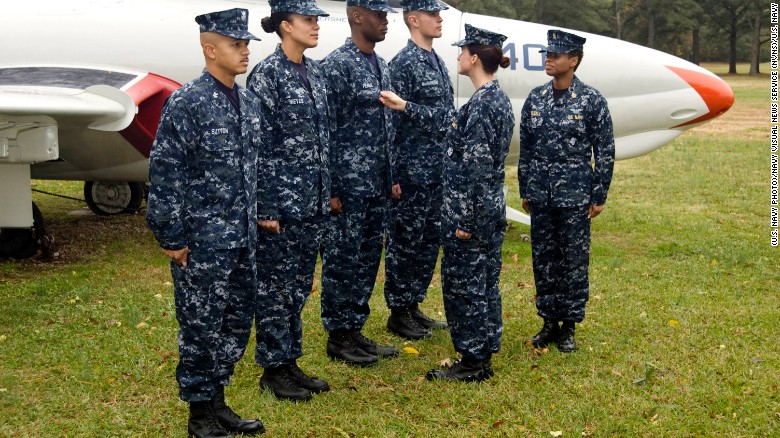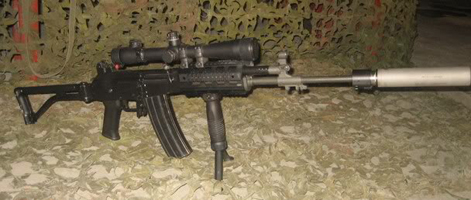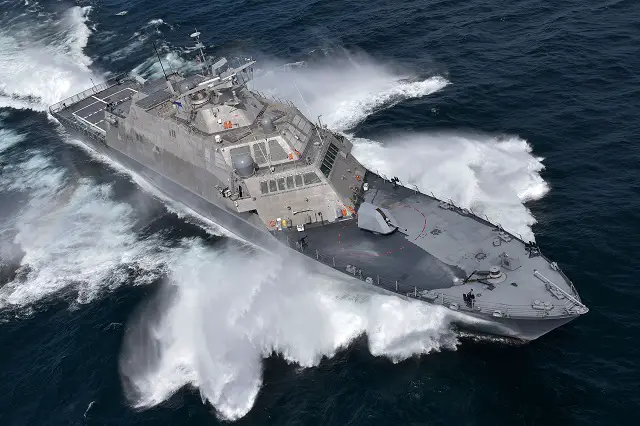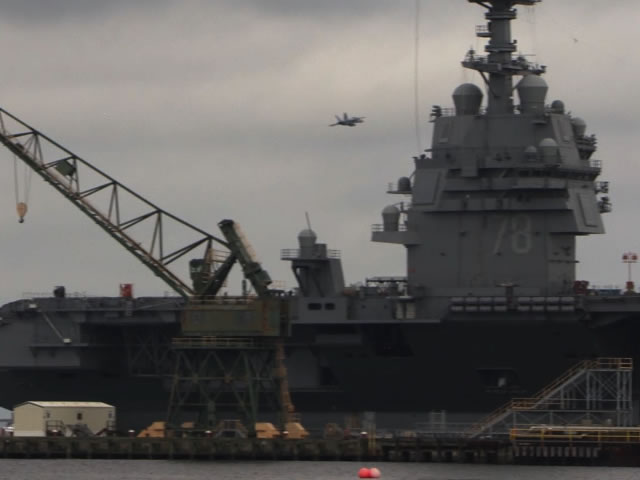Board Recommends Further Use Of Autonomy In Sea Control, Support Of Ground Troops
By: Megan Eckstein
August 24, 2016 7:39 PM

The U.S. Navy and Marine Corps should advance the way they use unmanned systems, favoring greater autonomy over remotely-controlled missions and developing multi-vehicle systems such as swarms and cascaded operations, according to a recently released report by the Defense Science Board.
The DSB report, requested by the Pentagon’s acquisition chief in November 2014, notes a variety of Pentagon-wide challenges in developing, testing, fielding and operating autonomous systems, such as operator trust, cyber security and developing a test and evaluation plan for learning systems.
Specific to the Navy, the board recommends adding greater autonomy to Navy counter-mine unmanned underwater systems as a way to save time and keep personnel even farther from potential dangers.
“Currently deployed counter-mine applications use UUVs for persistence and protecting humans from danger, but rely on human operators at a command center to process data for target classification. This is followed by a separate mission to neutralize any mines detected,” according to the report.
“Autonomy can reduce both the time to neutralize the threat and the danger to the personnel assigned to the task.”
The report notes progress in incorporating unmanned technology into the mine countermeasures mission, going from MCM-1 class ships that “can detect, classify, and neutralize all known types of mines, but are manned by a crew of over 80 individuals” to the MK-18 Mod 2 UUV – though Mk-18 operations today “continue to require long tactical timelines with intensive operator involvement, including a manned platform entering the minefield during the neutralization stage. Increased autonomy could reduce the demand for manning and personnel risk, and decrease the tactical timeline.”
DSB acknowledges ongoing Navy research efforts such as the Single Sortie Detect-to-Engage program, but the report recommends a focus on automatic target recognition and autonomous launch and recovery – which would eventually allow MCM-related UUVs to be delivered by even larger UUVs, keeping personnel even farther from potential underwater mines.
To achieve these goals, the report recommends that the Office of Naval Research (ONR) and Program Executive Office for Littoral Combat Ships (PEO LCS) conduct a user operational evaluation system program that would cost about $60 million a year for three years. The first step would be to take a UUV already in the platform and outfit it with an automatic targeting recognition system, which would locate and identify mine-like objects and ping a remote operator only for verification of the object’s identification, instead of today’s two-sortie operation with “intensive operator interaction.”
The user operational evaluation program would then add communication from the remote operator to the mine disposal platform to avoid a scenario in which humans would have to go into the minefield. In a final step, the whole detect-to-engage system would be delivered by a large UUV or an unmanned surface vehicle, not only keeping personnel further from the minefield but also adding an element of covertness.
“Utilizing this acquisition model, fleet operators would work with developers during the course of the program to experiment with the system to rapidly evolve (concepts of operations), and design and characterize system strengths and limitations. After four years, the program would transition the enhanced MCM package to the Navy’s 5th Fleet,” the report recommends.
Related is the report’s recommendation to pursue “cascaded UUVs,” where an extra-large UUV might deliver smaller UUVs to an area of operations, collecting real-time information and passing that along to its small UUVs before deploying them for their mission – offensive mining, mine countermeasures, decoy delivery and more.
The report recommends that the Navy and the Defense Advanced Research Projects Agency (DARPA) conduct an experiment in which these large and small UUVs work together to create a minefield to restrict enemy movement. The experiment, which would also cost $60 million a year over three years, would first demonstrate the ability to find and target enemy surface combatants using radio frequency (RF) emissions and acoustic signatures. Next, the Navy and DARPA would select the right UUV modular torpedo for the mission, which could balance the command and control smarts of a UUV with the high-explosive warhead of a torpedo.
In the final demonstration, the extra-large UUV would navigate to its area of operations and deploy the UUV modular torpedoes, which would begin to seek adversary targets. Once they begin hitting targets, the UUV modular torpedoes might even recognize remaining UUVs’ locations to spread out and autonomously “heal holes” in the minefield.
“These concepts could be readily applied to other missions. For undersea missions, acoustic and RF decoy payloads would likely be much smaller than sea mines, and thus could be more easily deployed in quantity from existing commercial UUVs,” the report notes.
“While today’s electromagnetic maneuver warfare capabilities are limited, UUVs could provide a means to significantly extend capabilities and enable a covert option with a small observable footprint until electronic warfare (EW) operations are initiated.”
On the Marine Corps side, the report recommends developing unmanned aerial support teams that can operate swarms of 10 or more vehicles in support of tactical units. The service, ONR and DARPA should collaborate with a university-affiliated or federally-funded research center to test a “low-cost UAS fleet of at least ten vehicles with distributed (intelligence, surveillance and reconnaissance), (electronic warfare), communications, and strike payloads.”
They would develop concepts of operations for this swarm of UAVs; refine launch and recovery processes so that a three-man team could recover, refuel and re-launch the vehicles within 15 minutes; and create communication, information management and user interface systems to connect the UAVs, the UAV support teams and small tactical units on the front lines through a tablet or smart phone.
In parallel, the report states, the Marine Corps Combat Development Command should hold a competition to design the UAV, with an emphasis on using non-proprietary avionics and command and control and including an “Integrated software switch allowing the remotely piloted command and control system to switch between automatic and autonomous operating modes.”
DSB makes these experimentation suggestions and others as a way to highlight “the need to strengthen the operational pull for autonomy by demonstrating operational value across a broad range of missions.” The report also highlights the need to build trust in autonomous systems, the need to accelerate adoption of autonomous systems though Pentagon-wide enablers such as acquisition and test and evaluation changes, and the need to use new autonomous technologies to help the U.S. sustain its military advantage.
https://news.usni.org/2016/08/24/board- ... und-troops


















